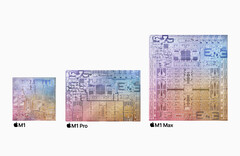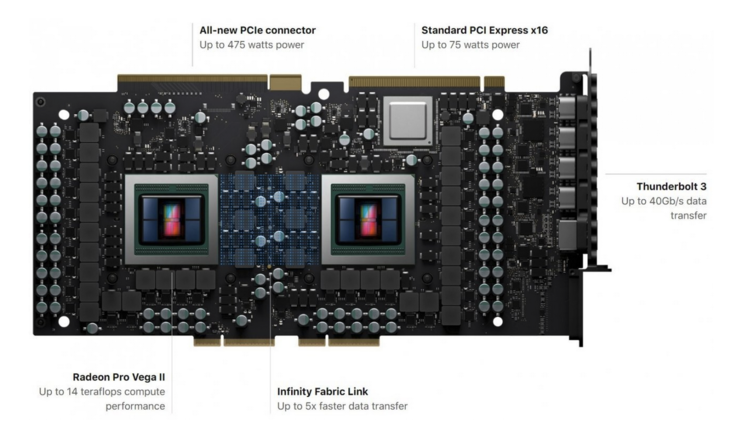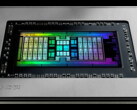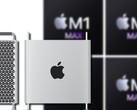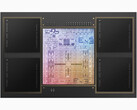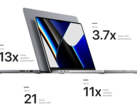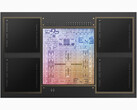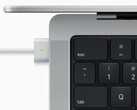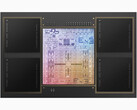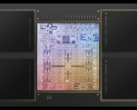I wrote an article for Notebookcheck back in March 2020, a few months out from the official announcement of Apple’s historic transition to Apple Silicon that correctly predicted almost everything we have seen Apple do and announce to date. This includes what we saw Apple reveal at its ‘Unleashed’ event with the M1 Pro and M1 Pro Max chips.
At the time I wrote “Apple could scale up its ARM designs as well if it wanted, while its integrated GPU designs are equally capable of being scaled up”, right when people were still thinking Apple would need discrete Nvidia or AMD GPUs in its Apple Silicon MacBook Pro models. I also wrote “Fanless Mac Pro models could also be on the cards...” -- while that didn’t pan out completely, Apple did say the fans in its new MacBook Pro models wouldn’t turn on at all for most computing tasks; they are there for intensive workloads to maintain sustained peak performance.
The next upgraded Apple Silicon we will likely see from Apple will be for its Mac Pro as the new M1 Pro and M1 Max chips will more than provide sufficient performance for a 27-inch iMac replacement. We can once again expect to see Apple scale up its chips, but it may or may not be in the same way it has done for the M1 Pro and M1 Max over the original M1, but it will almost certainly use the same underlying technology to do so.
One aspect of Apple’s ‘Unleashed’ MacBook Pro event that was particularly interesting was Johny Srouji’s references to Apple’s use of ‘fabric’ in the new M1 Pro and M1 Pro Max chips. What Srouji was referring to is a technology referred to as ‘silicon interconnect fabric’ and it likely points to how Apple will execute the silicon architecture for the next Mac Pro.
Before the M1 series of chips, the first Apple device to feature silicon interconnect fabric was the current Mac Pro. Its AMD Vega Pro II Duo GPU features two discrete Vega GPUs connected with AMD’s Infinity Fabric connecting them together to work effectively as one super powerful GPU over a connection with an 84GB/s bandwidth. This special fabric is much faster than connecting the two GPUs over a printed circuit board (PCB). Instead of a PCB connection, the fabric is made from silicon and with the wiring between the chips as small as in the chip itself; hence the awesome bandwidth.
There are different theories about how Apple will scale up its chips for the Mac Pro -- one very large single wafer is possible using silicon interconnect fabric (it is doing this to a lesser extent right now with its M1 Pro and M1 Max chips), or it could connect two M1 Max chips or four M1 Max ships also using silicon interconnect fabric just as AMD has has been doing with the AMD Pro Vega II Duo, and in other ways with its new chiplet designs.
As Mark Gurman of Bloomberg has speculated, this could yield a Mac Pro chip with up to 40 high-performance cores and up to 128 GPU cores for up to an incredible 40 teraflops of GPU compute. That’s assuming Apple’s Mac Pro chips actually use the M1 series architecture. It is quite possible by the time we see it launch, Apple will be ready with M2-based silicon for the Mac Pro, or even new silicon based on Arm’s new v9 architecture. It might also beef it up in other ways too -- the sky is really the limit as to what Apple ultimately chooses to do.
Another potential side benefit for Apple in developing such a workstation worthy chip, is that Apple could end up using its Mac Pro chips in its own servers running its massive iCloud backend. Arm-based servers are starting to increase in popularity because of the very performance-per-Watt benefits that Apple has highlighted in its chip designs. Apple’s chips would be the leading server chips offering incredible performance as well as massive power savings too. It is clear, however, that whatever Apple's plans, silicon interconnect fabric will play a key role.
Pre-order the new 14-inch MacBook Pro with M1 Pro from Amazon.
Source(s)
Own




